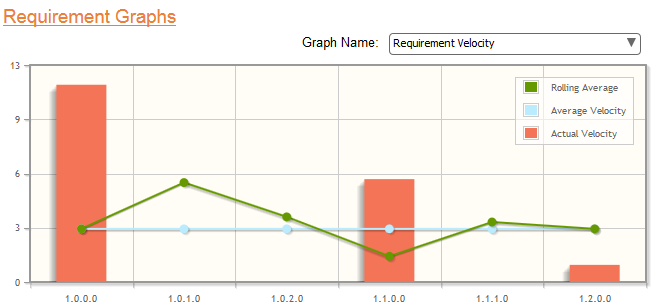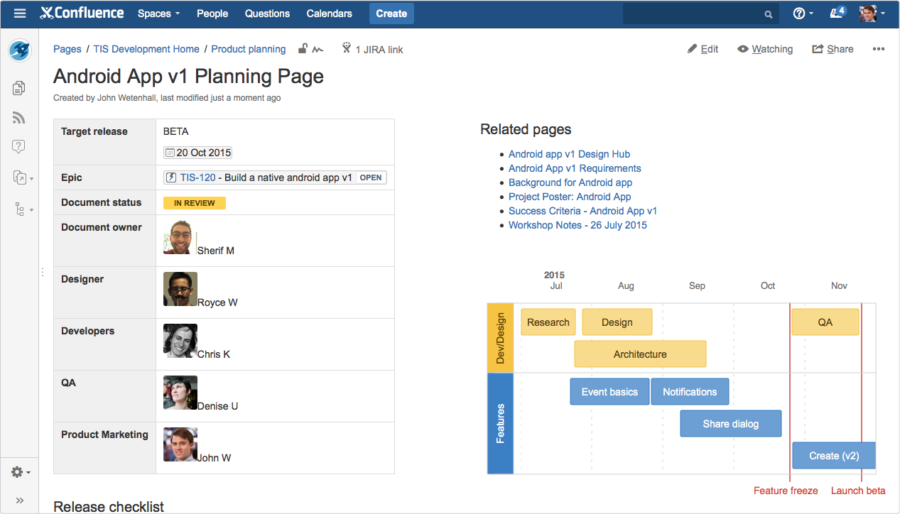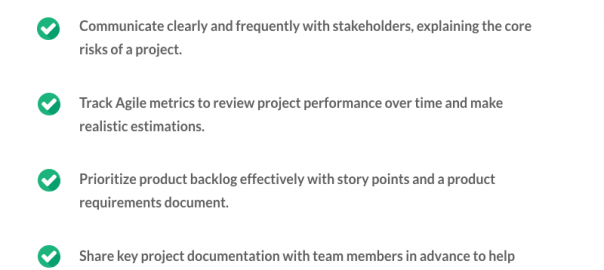— May 28, 2018

Improving employee productivity is a serious concern for small businesses. In our recent survey on top technology trends*, small and midsize businesses (SMBs) rated improving employee productivity as one of their top business goals over the next one to two years.
There are several creative strategies SMBs can use to improve employee productivity, from the gamification of corporate culture to equipping offices with smart climate control.
One effective way to get more out of small teams is through Agile project management tools and frameworks, such as Scrum.
However, not all Agile projects are successful. According to a 6point6 report, businesses in the United Kingdom will have likely wasted an estimated $ 50 billion on failed Agile IT projects over the last 12 months. The report surveyed mostly large enterprises, but SMBs would do well to learn from the mistakes that lead to failure.
Most Scrum sprint failures arise because of unrealistic expectations, backlog mismanagement, and sprint overplanning, costing businesses dearly in productivity, time, and money.
In this report, we’ll look at three sprint planning blunders that SMBs need to avoid to ensure the success of their Scrum projects.
Effective sprint planning is the difference between success and failure
Small businesses that practice Scrum, complete projects in time-boxed events called “sprints” that last anywhere from a week to an entire month. Sprint planning involves the product owner, the Scrum master, and the development team, which commits to completing a set of tasks (e.g., new feature development or bug fixes).
Sprint planning lies at the heart of Scrum, because it influences the actual project outcomes. The success or failure of a project depends on a team’s ability to deliver on the tasks they commit to do during the sprint planning stage.
However, businesses often fail to create effective sprint plans owing to a lack of Agile expertise. A VersionOne report that studied Agile approaches in large enterprises found that 80% of responding organizations still lacked Agile maturity.
It’s a similar scenario for SMBs that have newly adopted Scrum, as they often lack experienced Scrum masters and product owners. As a result, they’re unable to productively collaborate with the development team to chart out effective sprint plans, leading to project management failure.
Here are 3 common Sprint planning blunders that small businesses need to know about and avoid:
1. Setting unrealistic expectations by overcommitting to overeager product owners
Sprint planning meetings are productive sessions, until the product owner starts making unreasonable demands from the team. This usually happens when product owners try to accommodate every single request from the project stakeholders.
Instead, product owners must learn to say “no” to project stakeholders when necessary, as explained by Gartner analyst Tina Nunno:
Learn to deliver the assertive “no” (Source)
How tech can help:
The ability to use the assertive “no” indicates that the product owner can communicate effectively with project stakeholders about the team’s capacity. Use the available features in Agile project management tools, such as status tracking, to provide data-driven reasons why teams can or cannot accommodate a request in a given sprint.
- Centralize project communication: Offer stakeholders real-time access to a project’s status with centralized dashboards that will update them on completed and pending tasks. Inform them of a project’s progress and changes with in-app notifications, email, and built-in chat functionality.
- Share key project and performance metrics: Estimate what a team can complete during a sprint by tracking its historical performance in burndown and velocity charts. Share these insights with project stakeholders to make a case for your team’s commitment capacity (scope) for a given sprint.

Velocity chart in SpiraPlan (Source)
Recommended actions:
- Use the notification features of your Agile PM software to communicate effectively with stakeholders on a project’s progress.
- Leverage functions such as burndown and velocity charts to correctly estimate a team’s commitment capacity.
2. Holding sprint planning meetings without a prioritized product backlog
Among the many responsibilities of the product owner, most important is prioritizing the product backlog, also referred to as “user stories.” Failing to prioritize effectively means development teams will end up cherry-picking user stories that are added to a sprint without completely understanding how they’ll affect the project’s scope.
Prioritization means selecting which product features to build first. For this, SMBs should analyze the easy-to-build features that offer the highest value for users. This is explained by Devin Deen (Agile Scrum master and project management expert):
Building the product backlog (Source)
How tech can help:
When prioritizing the product backlog, Deen says businesses should remember the Pareto principle: Users will get 80% of the value of your product from 20% of its features. Use Agile project management tools to determine the features that fall into that all important 20%.
- Prioritize features with story points: In Scrum tools such as VivifyScrum, an estimating functionality called planning poker allows each team member to assign points to a user story. It helps them estimate the complexity and effort needed to build that feature; higher points mean higher complexity. Teams are then able to identify the features that require the lowest cost or effort, which determines which user stories are prioritized and included in a given sprint.
- Help teams understand product requirements better: While user story estimation helps teams understand a feature’s complexity, a product requirements document (PRD) feature offers development teams insight into a feature’s value for users. Product owners can include details such as customer interviews and personas in the PRD to help developers and designers understand the importance of these details as they build product features.

Product requirements document in Confluence (Source)
Recommended actions:
- Build a product requirement document (PRD) to help teams better understand customer and stakeholder requests.
- Accurately estimate the effort required to build a feature by assigning points to user stories.
3. Spending too much time in sprint planning meetings
Let’s face it, Scrum teams attend a lot of meetings: daily Scrums, sprint reviews, sprint retrospectives … the list goes on. Add to this ongoing training, workshops, one-on-one sessions, and the most time-consuming of all sprint planning meeting. This creates the perfect situation for overworked but underperforming teams.
As a small business using Scrum, ensure that teams come prepared for sprint planning meetings. Otherwise, they waste hours in unproductive meetings, as Mike Cohen explains:
Save time in sprint planning meetings (Source)
How tech can help:
The sprint planning meeting is crucial to the success of Scrum. However, small businesses must make sure that their teams are using the time productively. This is where Agile project management tools help. They allow teams to plan meetings, communicate, and share files on a centralized platform.
- Prepare the team for sprint planning meetings: Cohen says that a key mistake teams make is to come unprepared to sprint planning meetings. To avoid this, product owners must share key project documentation, such as the product backlog, so that teams know what to discuss in meetings. Here, file sharing tools come in handy, as they allow product owners to share project-related documents with relevant teams in a secure and centralized location.
- Track your team’s schedule and eliminate unnecessary meetings: Sprint planning meetings tend to be lengthy, because teams don’t have adequate time to prepare for them. This is because of the inordinate time they spend in other unnecessary meetings. Scrum masters can use scheduling tools that have built-in calendars and reporting dashboards to track team members’ availability and identify the most important meetings they need to attend.

Team calendar in Wrike (Source)
Recommended actions:
- Prepare the team for the meeting beforehand by sharing the product backlog and other key project documentation.
- Track team members’ availability and eliminate unnecessary meetings.
Conclusions and next steps
The purpose of this report is not to vilify product owners or to be a prescriptive solution for the different issues that small businesses face when practicing Scrum.
Rather, it’s a “what-not-to-do” guide for small businesses practicing Agile project management or considering making the shift. We remind SMBs that Agile project management frameworks easily adapt to their lean organizational structure, but they should constantly review their processes for Agile success.
Here’s a quick summary of the key takeaways:

*Information on Gartner’s survey on technology trends:
Gartner conducted this survey in April and May 2017 among 699 U.S.-based SMBs with more than 10 employees and annual revenue of less than $ 100 million. The survey excluded nonprofit organizations. The qualified respondents are decision-makers or have significant influence on the decisions related to purchasing technologies for their organization.
Business & Finance Articles on Business 2 Community
(61)
Report Post




